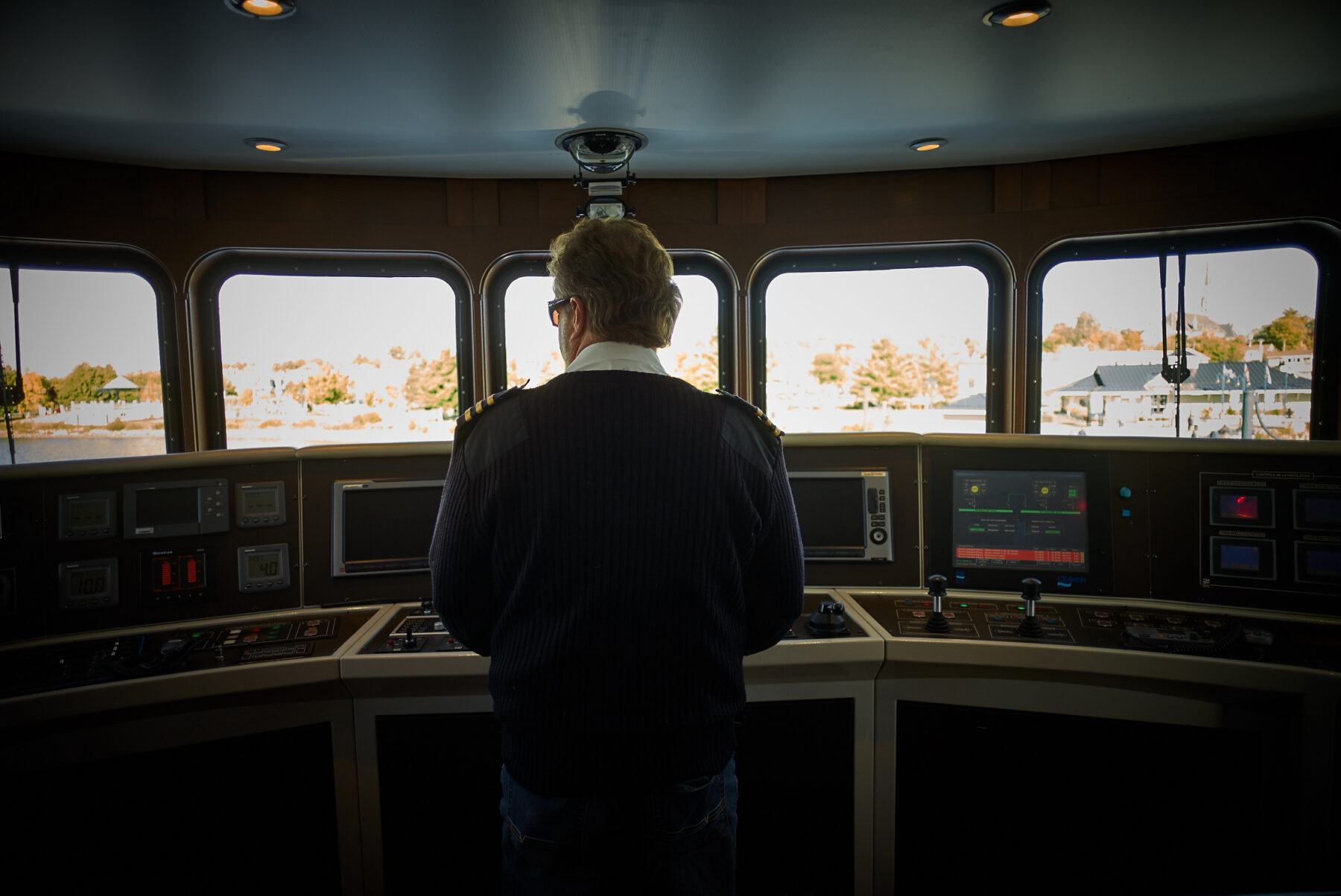If you’ve ever been aboard Escapades Memphrémagog’s Grand Cru, you’ve probably come across Charles Lavigne, captain of the boat since 2012. In fact, Captain Lavigne even helped to build the ship!
Le Grand Cru’s beginnings go back to 2008 when, during the summer of that year, the design of the boat had been worked out and the construction costs established. 2009 saw the manufacturing of the specific parts required to build the vessel. Charles Lavigne joined the project in 2011, a couple of months before the boat’s very first sailing season. He became captain the following year.
We asked him how he enjoyed life as a mariner, sailing the picturesque waters of Lake Memphremagog.
What did you do before becoming captain of Le Grand Cru?
I was selling machines, but the life of a mariner had always appealed to me. I’d actually taken a private training course, thinking that one day, I’d be able to put it to good use and become a professional.
I have to admit that in Sherbrooke, it was pretty hard to find a job in the marine world, but then I lucked out! Escapades Memphrémagog’s boat was in the works and I already had the requisite qualifications to be a Small Vessel Machinery Operator (SVMO). I earned my captain’s licence the following year.
How does one become a captain?
There are a couple of options. You can take a navigation course (DEC) at the Institut maritime in Rimouski, which takes four years. I didn’t do that. I was more of a self-taught sailor. I took several courses on maps and weather (among other subjects), earning diplomas through a variety of organizations. After that, I rounded out my training at the Maritime Institute by completing short courses on radar and marine emergencies.
No matter which option you choose, you still have to pass a Transport Canada test on nautical charts and know the rules regarding marine traffic. The test is pretty tough!
Finally, to qualify as first mate, you need to accumulate 900 hours of navigation. To become captain, you need another 500 hours.
When exactly did you join the Grand Cru project?
January 2011. By then, the main structure of the boat was complete. I was in charge of supervising the assembly work and the operating systems (piping, pumps, alarm systems, engines, generators). You name it! I learned a lot in six months. I had already been hired with a view to being the captain and marine manager.

What’s the difference between those two jobs?
A marine manager is responsible for the maintenance of a vessel and making sure it is in compliance with Transport Canada regulations. A captain is in overall charge of the voyage itself—from safety to navigation.
What do you love most about the boat trip you’ve now been making for over a decade?
The route we follow is virtually unchanged since I first started. Lake Memphremagog is narrow, so we can’t venture too far. On the way out, we sail to Georgeville, a municipality some 22km from Magog, then on the way back, we take an X-shaped turn so the passengers can enjoy the scenery on both sides of the water.
The second part of the trip is fantastic! The landscape is so picturesque—large, handsome properties along the shoreline, the setting sun, Sargent Bay, Saint-Benoît-du-Lac monastery… I never tire of those views!

Do you have any interesting anecdotes about your time on the boat?
The first year Le Grand Cru was in the water, I was still a SVMO. I was in the process of accumulating the requisite number of sailing hours and although the captain who was with me was experienced, he wasn’t familiar with the area. There were lots of other boats in the water and they were circling around us—evidently viewing us as a whole new attraction!
We were trying to avoid a collision with a sailboat that got very close to us, but unfortunately, we ran aground on a sandbank! We had to evacuate the boat, but it was a beautiful day and folks were enjoying a beer in the sun. They absolutely didn’t want to get off!
At the time, we didn’t have up-to-date charts, but that has been rectified since then. A mishap like that would never happen nowadays.
What does a captain do in the winter?
Usually, I go to Florida for a while. I do small manual jobs on the boat. I prepare for the annual inspection. By the time April rolls around, I can’t wait for the start of the season! Every two years, I have to have a medical test to renew my licence. Right now, my health is good, so everything is fine. I’m 67 years old and I’d like to continue being captain until I’m 75.
Come and say hello to Charles this summer aboard Escapade Memphrémagog’s Grand Cru boat, and spend a pleasant day or evening in his company! To book a cruise, click here.

